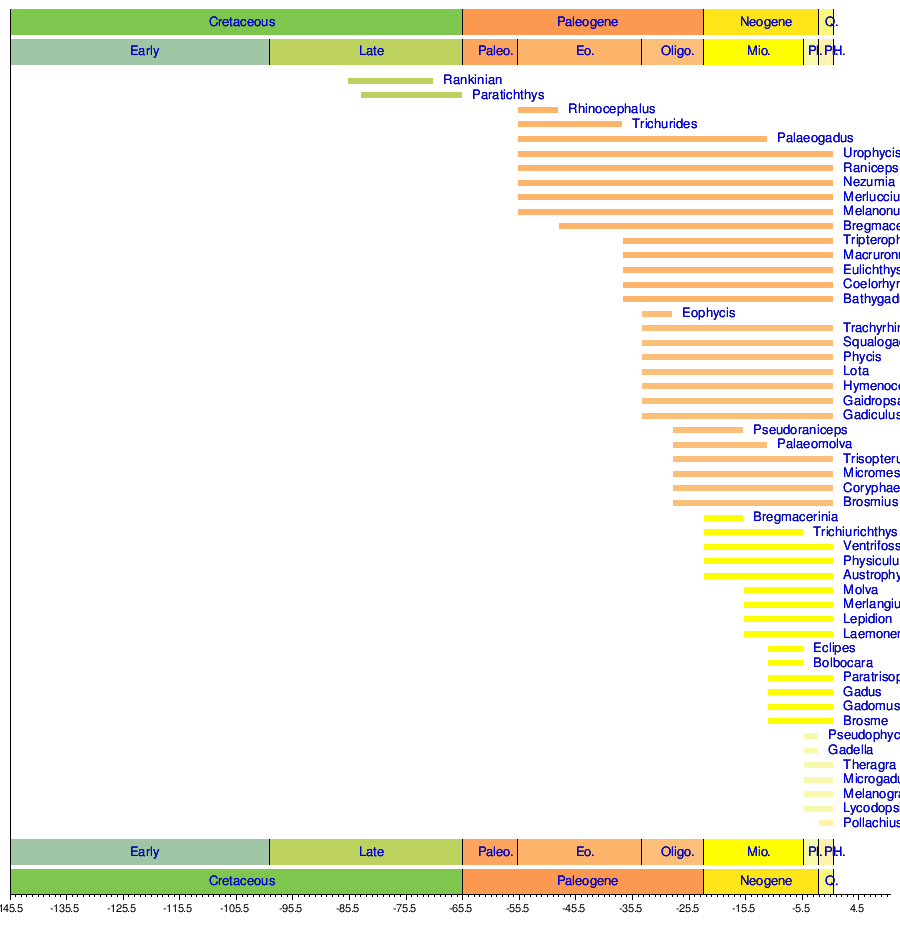Gadiformes
| Gadiformes | |
|---|---|
 | |
| Greater forkbeard | |
| Scientific classification | |
| Kingdom: | Animalia |
| Phylum: | Chordata |
| Class: | Actinopterygii |
| Order: | Gadiformes Goodrich, 1909 |
| Families | |
|
Bregmacerotidae (codlets) | |
Gadiformes are an order of ray-finned fish, also called the Anacanthini, that includes the cod and its allies. Many major food fish are in this order. They are found in marine waters throughout the world, and there are also a small number of freshwater species.
Common characteristics include the positioning of the pelvic fins (if present), below or in front of the pectoral fins. Gadiformes are physoclists, which means their gas bladders do not have a pneumatic duct. The fins are spineless. Gadiform fish range in size from the codlets, which may be as small as 7 cm (2.8 in) in adult length, to the Atlantic cod, Gadus morhua, which reaches up to 2 m (6.6 ft).[1]
Timeline of genera

References
- D.M. Cohen, T. Inada, T. Iwamoto and N. Scialabba, FAO species catalogue. Vol. 10. Gadiform fishes of the world (Order Gadiformes). An annotated and illustrated catalogue of cods, hakes, grenadiers and other gadiform fishes known to date. FAO Fisheries Synopsis 10 (125) (1990)
- Sepkoski, Jack (2002). "A compendium of fossil marine animal genera". Bulletins of American Paleontology 364: p.560. Retrieved 2011-05-17.